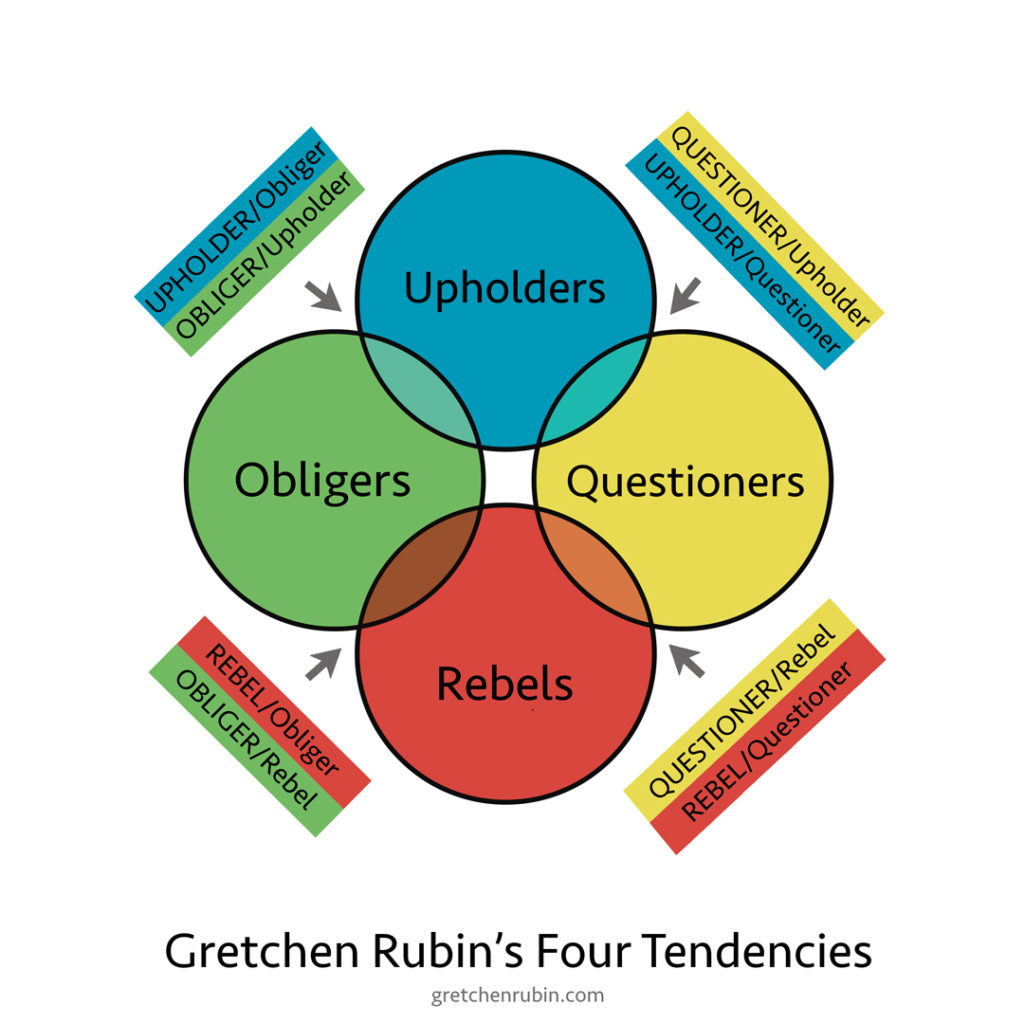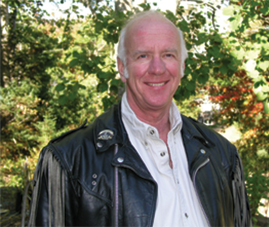Are The Four Tendencies The Same As True Colours?
19/06

In order to understand ourselves better we make models that sort behaviours into a few easily understood bins. One example is when we use gas, liquid, solid to sort among the different types of matter in the world. We refer to insects, birds, mammals, reptiles etc to better understand the animal kingdom. So too when we look at personality and behaviour types, it is helpful to have some bins to start conversation. One of the landmark models of personality types is the Myers Briggs personality type indicator which has been used for decades to gain insight into how we behave
That assessment tool has 16 bins to sort our behaviours into, each described by four initials. You might be an ENFJ, which has some meaning and you can look up the paragraphs of description. Change one letter, INFJ, and you are a different person. The scores are derived from answers to many questions and whether you get an E or an I can be a very close call. My Myers Briggs is an XNFX which means that for the first and last categories I am right on the border of the two choices. In this example, I am Introvert or Extrovert (that first initial). Very different. Opposites actually
So Myers Briggs was the go-to Personality Type Assessment. Eventually though, some people were finding the 16 Types and initials a tough sort . Along came the True Colours model. Four bins – Blue, Gold, Green, Orange. Much easier to absorb and remember. The language of interpretation was ‘I have a strong Green with almost equal secondary traits of Orange and Blue. My Gold is a distant last’ (this is me). The presentation of the results is usually a circle with the appropriate size of pie slices for the four colour portions. (I like that all in one, easy to understand format)
Enter Gretchen Rubin who offers the Four Tendencies model. In her observation (and other research too) there are four bins, Upholder, Questioner, Rebel, Obliger. Take the free quiz and, presto, I am a Rebel. I really did not know that. I know and relate and believe my Myers Briggs and True Colours designations. I see them in my thinking and in my actions. Clear. So I talked with some who know me. Dang, they said yes to Rebel. It is about context. Rubin’s model does not provide for an X to indicate a tie like with Myers Briggs, and, the language is more absolute. I am a Rebel (and a definitely wanna be Upholder, says the Rebel in me)
One of the great things about Rubin’s model presentation is that she provides simple strategies to help me do well, be happy and successful, even when my Rebel tendency is getting me in trouble. It is a ‘Tendencies’ model, not absolute. So in those moments when I am not rebelling about the form of presentation of the results of the model, I’m great with it. The words she uses are in themselves descriptive, easy to remember and to smile about when I apply them to myself
Myers Briggs, True Colours and Four Tendencies are doing the same thing, with variations on how the data is presented. Try them for yourself. And definitely yes there are a dozen other models too
Myers Briggs Type Indicator
https://www.16personalities.com/free-personality-test
True Colours
https://my-personality-test.com/true-colours
The Four Tendencies
With any of these watch yourself. Resist using a quiz result as a label for someone, including yourself. These are indicators, tendencies, part of the spectrum that is you (or your colleague’s). We use True Colours with corporate client teams which they find fun and valuable. Increased self awareness is ‘yes’ no matter how you get it
Joseph Seiler MCC

